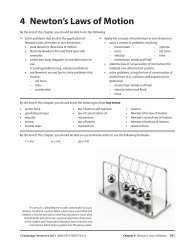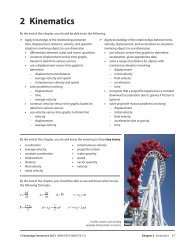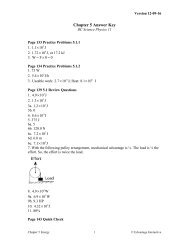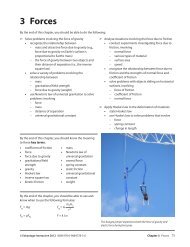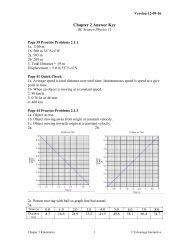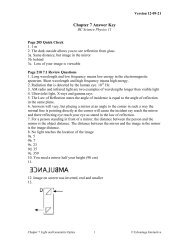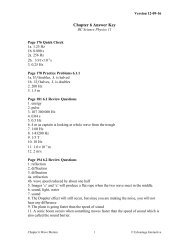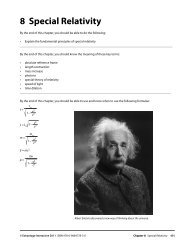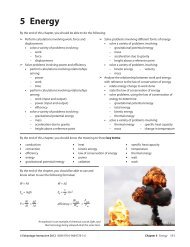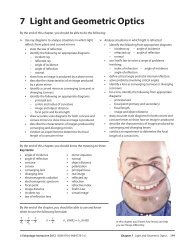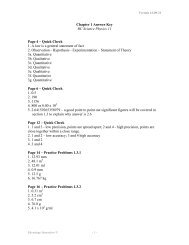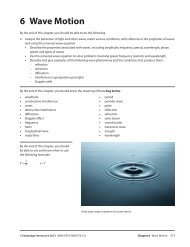Draft BCPhysics11-4 Edvantage Interactive.pdf - BC Science ...
Draft BCPhysics11-4 Edvantage Interactive.pdf - BC Science ...
Draft BCPhysics11-4 Edvantage Interactive.pdf - BC Science ...
You also want an ePaper? Increase the reach of your titles
YUMPU automatically turns print PDFs into web optimized ePapers that Google loves.
Quick Check<br />
1. What is the momentum of a 100 kg motorbike travelling at 10 m/s?<br />
2. What is the mass of plane that is travelling at 200 km/h and has a momentum of 1.1 × 10 6 kg•m/s?<br />
3. How fast does a 0.01 kg bug have to fly to have a momentum of 0.25 kg•m/s? Is this possible?<br />
Impulse<br />
According to Newton’s second law, in its original form F = mv<br />
t<br />
∆p = F∆t = m∆v<br />
. This can be rearranged to:<br />
The product of the force and the time interval during which it acts is called the<br />
impulse. It is given the symbol I. The last equation shows that the impulse is equal to the<br />
change in momentum it produces.<br />
This is an important relationship when considering an object that is undergoing a<br />
change in momentum. An object’s momentum changes because an impulse has been<br />
placed on the object. For example, if you are driving down a road at a constant velocity,<br />
you and your vehicle have a momentum. When you press on the gas pedal, the velocity<br />
of the vehicle increases. The momentum has also increased. This increased momentum<br />
was caused by a force being exerted on the vehicle over a period of time. Or put another<br />
way, the vehicle experienced an impulse. The amount of impulse equals the change in<br />
momentum in the vehicle.<br />
Units for Momentum and Impulse<br />
Momentum is measured in kg•m/s because these units have the dimensions of mass and<br />
velocity. Impulse is measured in N•s because these units have the dimensions of force and<br />
time. Since impulse is equal to change in momentum, these units must be equivalent. It<br />
can easily be shown that this is true:<br />
[N•s] = [kg•m/s 2 ] • [s] = [kg•m/s]<br />
Momentum and impulse may be expressed in either unit.<br />
182 Chapter 4 Newton’s Laws of Motion — DRAFT © <strong>Edvantage</strong> <strong>Interactive</strong> 2011 ISBN 978-0-9864778-3-6



